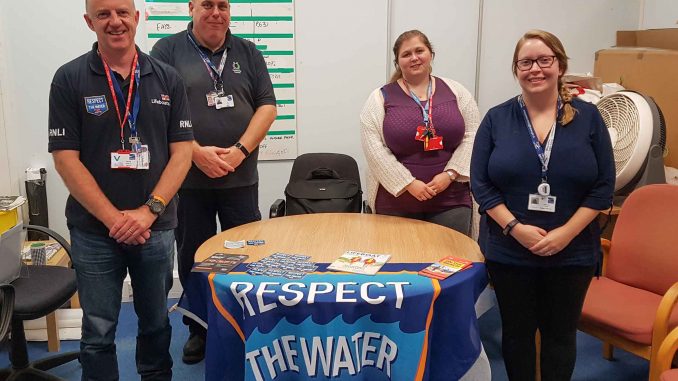
A volunteer member of Margate’s RNLI lifeboat crew has taken on the role of community safety officer as part of a bid to halve accidental drownings in the UK by 2024.
The RNLI nationally aims to change the behaviour of groups and individuals identified as being ‘at risk’ of becoming a rescue statistic for lifeboat crews. To help raise safety awareness at a local level volunteer community safety officers are being appointed and Andy Mills has now taken up the role at Margate.
Andy is a civil servant and a member of Margate’s lifeboat crew. As part of the shorecrew he recently qualified as a driver of the Talus tractor used to launch the all-weather lifeboat.
His role as the Community Safety Officer involves developing a local lifesaving plan, including identifying ‘at risk’ groups and providing targeted safety advice.
He has already been busy delivering Respect the Water literature to local groups, including religious leaders who have contact with wider audiences. Safety advice has been passed to the local fishing community and dog walker safety posters distributed to seafront cafes and restaurants.
RNLI statistics show that males aged 16-39 are at significant risk and groups such as rugby clubs and park runners are being targeted in the drive to raise awareness of the potential dangers of the sea and shoreline.
Andy said: “Lifeboats will always be needed to rescue those in trouble but by taking a proactive approach to safety we can hopefully better educate the public in enjoying the sea and coastline rather than the day ending in tragedy.
“The RNLI’s lifesavers helped over 29,000 people in 2016 and by gathering and analysing rescue statistics are able to identify those who are at particular risk, it is these people we are aiming to educate and influence and just another means of saving lives at sea.”
James Uren, RNLI area lifesaving manager, said: “We know that over half of those that died at the coast last year did not set out to go into the water. The appointment of this role plays a vital part in helping us reduce drowning by communicating our key safety messages in our local community through face-to-face engagement, promoting lifesaving interventions and education around water safety.”

